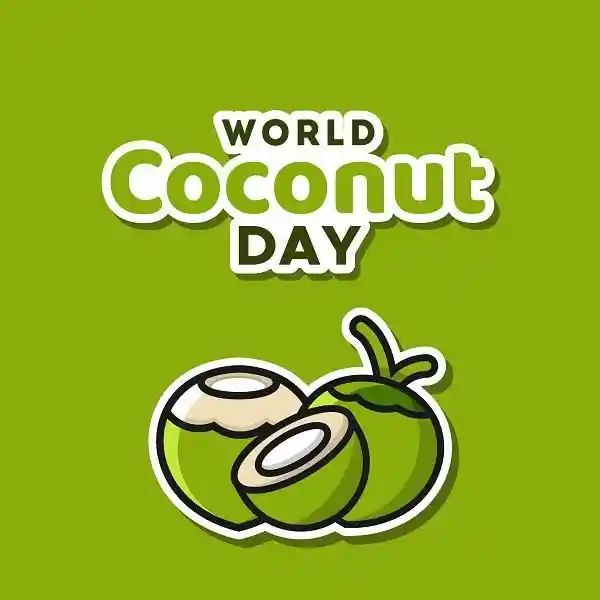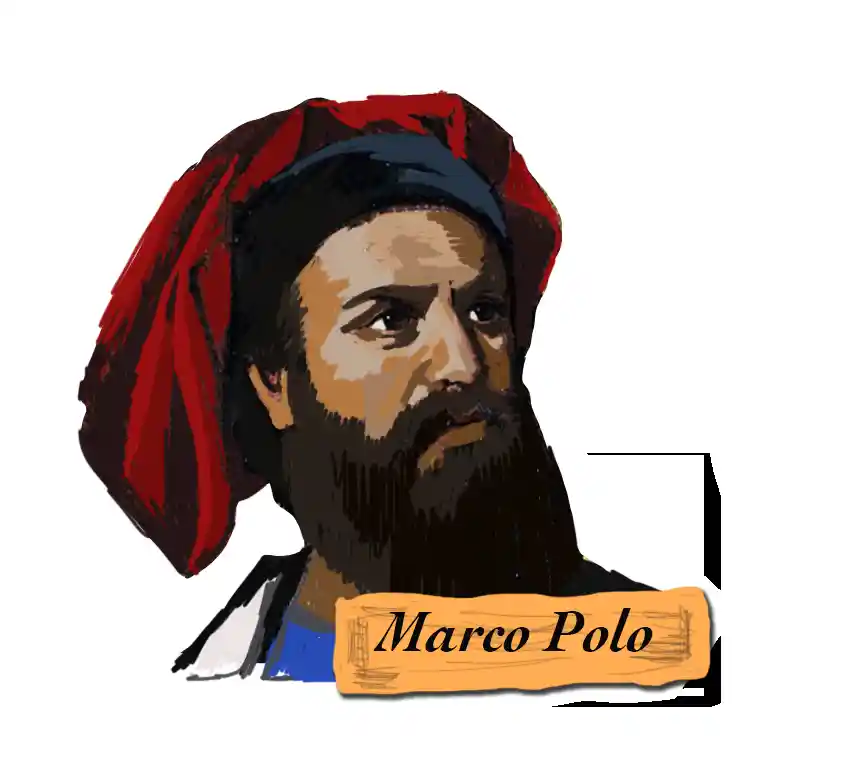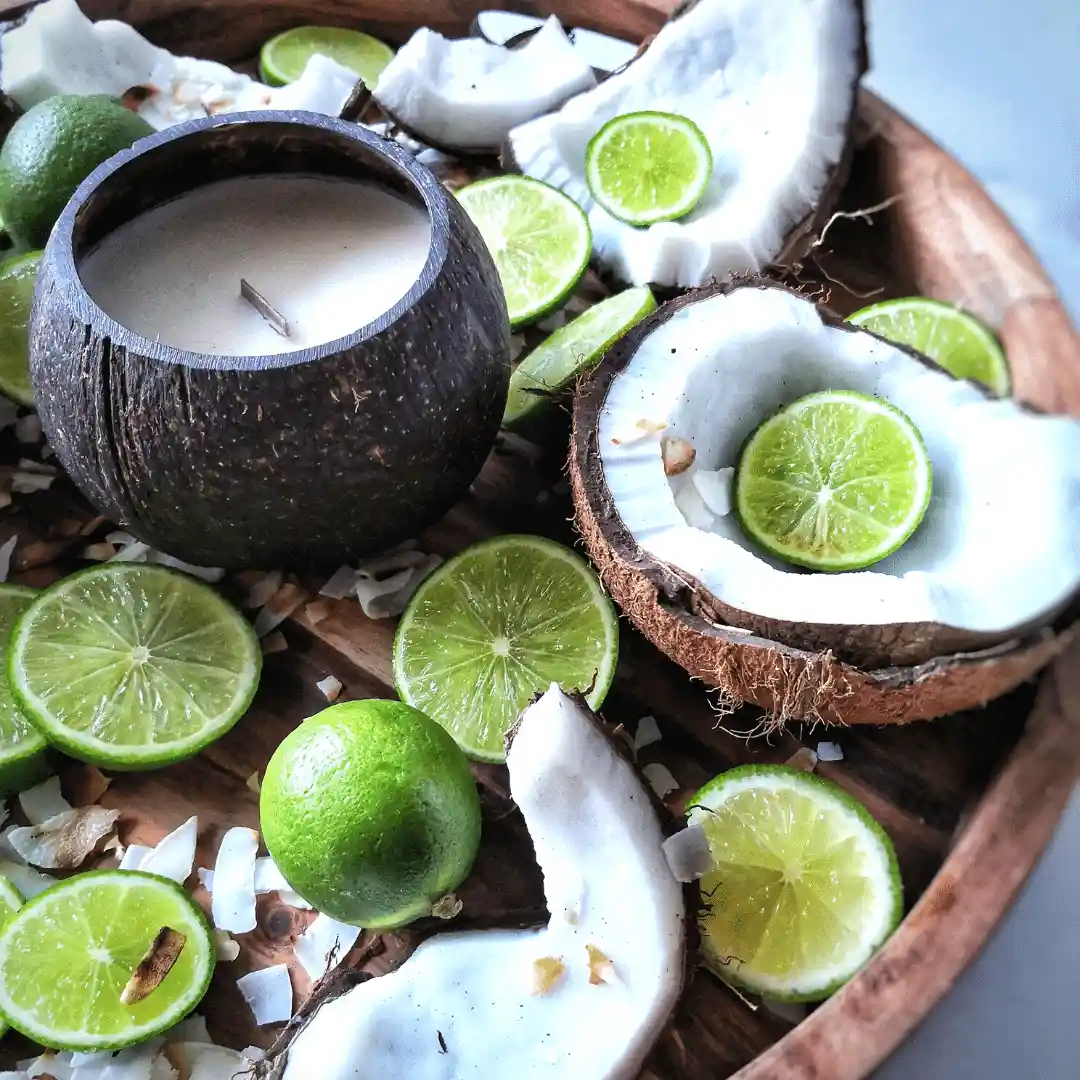Swiss Army Knife Of Plant Kingdom
From those Bounty Chocolates in our refrigerators to fancy piña colada in a 5-star restaurant, from the famous delectable dish of Thai curry to Thengai Sadam of South India, these fruits with three holes have an amazing fanbase. But do you know about its amazing story, the story of Cocos nucifera, the story of nariyal?

When the "King of Fruits" wears a birthday cap; Image Source: Business Standard
Popularly known as the Tree of Life, coconuts sustain human life. Gently swaying back and forth with the light breeze, every part of a coconut tree comes into great use. The fruit of the tree itself has several uses. The inner flesh of the fruit is used for extracting milk and oil and making a variety of dishes. Coconut water is used to cure multiple diseases like diarrhoea and high blood pressure. The hard outer shell is used as charcoal and the fibrous husk is burned to eliminate the mosquitoes. Coconut milk and oil are used to make soaps and cosmetics. The leaves, barks, husks, and outer shells are used to design furniture and several other artefacts.
The story of coconut starts with the emergence of the story of Ramayana. Several literary shreds of evidence and Sri Lankan chronicles suggest that the Indian Subcontinent welcomed coconut before the 1st century BCE. Yet another popular essay named Topographia Christina by Cosmas Indicopleustes indicates that coconut was known as “the great nut of India”. In the famous story of Arabian Nights, Sinbad the Sailor too traded a coconut in his voyage.
In the year 1951, the world warmly welcomed showers of Bounty chocolates which is a chocolate bar filled with coconut powder.
In the year 1971, Harry Nilsson wrote a book named “Coconut” wherein a woman puts lime juice in coconut water and drinks it.
Finally, in the 2000s, people around the world realise the amazing taste and health benefits of coconut water and thus, it became one of the most popular drinks in the west.
When people started realising the importance of coconuts, World Coconut Day came into existence. To celebrate the formation of the Asian Pacific Coconut Community (APCC), headquartered in Jakarta, World Coconut Day is celebrated on September 2 every year. All the major coconut growing countries including India are an integral part of APCC and together, they celebrate the origin of one of the world’s healthiest foods.
Known as Kalpavriksha or the “Divine Tree” that fulfils wishes, coconuts are an indispensable part of our lives. So, this World Coconut Day, don’t forget to try a glass of fancy pina colada and the famous coconut rice that would not only enhance your health but make your taste buds happy and satisfied.
Though coconut is an extremely common fruit found in almost all countries, from tropical coasts to typical grocery stores, its origin is said to be India and Southeast Asia. Around 2000 years ago, the Arab traders carried coconuts to East Africa from the Indian subcontinent, thus naming the fruit- zhawzhat al-hind meaning Walnut of India. The Indians first started using coconut tree’s barks as boats.
Apart from its origin, the name “coconut” too has an amazing story. As coconut has three holes at the bottom that represent a human face, the ancient Iberian folklore narrates the story of the Portuguese and Spanish sailors who viewed this fruit as a bogeyman and thus called it “Coco”.
Explaining the origin of coconut in the timeline would make it much easier. In the year 1280, Marco Polo met coconut when he was on his way to Sumatra and thus, came into existence “nux indica” or “Indian nut”.

A discovery by Marco polo that changed the world of fruits; Image Source: PNGio.com

Coconut Lime: a dish so accidentally invented; Image Source: Coconut Bowls

When Sinbad met Coco; Image Source: Stefan Mart Homepage


